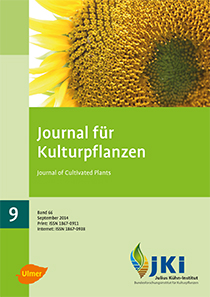Population dynamics of <em>Heterodera schachtii</em> Schm. and yield response of susceptible and resistant sugar beet (<em>Beta vulgaris</em> L.) after cultivation of susceptible and resistant oilseed radish (<em>Raphanus sativus</em> L.)
Keywords:
Beet cyst nematode, population density, reproductive rate, sugar beet varieties, white sugar yield, field trials, experimental methodologyAbstract
Heterodera schachtii is an important pest of sugar beet. Field trials to quantify yield responses of sugar beet varieties to H. schachtii or to assess the effect of variety on population dynamics of the nematode are difficult due to its patchy distribution in the field. The aim of the present study was to develop an experimental method to achieve a more homogeneous distribution of the nematode and to relate yield of susceptible and resistant sugar beet to population density of H. schachtii. From 2002 to 2005, thirteen field trials were conducted in four regions of Germany. In the year prior to sugar beet cultivation, a susceptible and a resistant oilseed radish variety or a 50/50 mix of both were grown in strips to vary population densities of the nematode at each trial site. Significant differences in population densities after oilseed radish cultivation were obtained in six of the thirteen trials. The reproductive rates of H. schachtii were higher under the susceptible than under the resistant sugar beet variety in all trials and generally decreased with increasing initial population density (Pi). In both varieties, white sugar yields decreased with increasing Pi. This relation was not confirmed in all trials. Root quality was not related to Pi. It was concluded that the introduced methodology is too costly and not sufficiently reliable for extensive series of field trials.
DOI: 10.5073/JfK.2014.09.01, https://doi.org/10.5073/JfK.2014.09.01
Published
Issue
Section
License
The content of the journal is licensed under the Creative Commons Attribution 4.0 License. Any user is free to share and adapt (remix, transform, build upon) the content as long as the original publication is attributed (authors, title, year, journal, issue, pages).
The copyright of the published work remains with the authors. The authors grant the Journal of Cultivated Plants, the Julius Kühn-Institut and the OpenAgrar repository the non-exclusive right to distribute and exploit the work.







